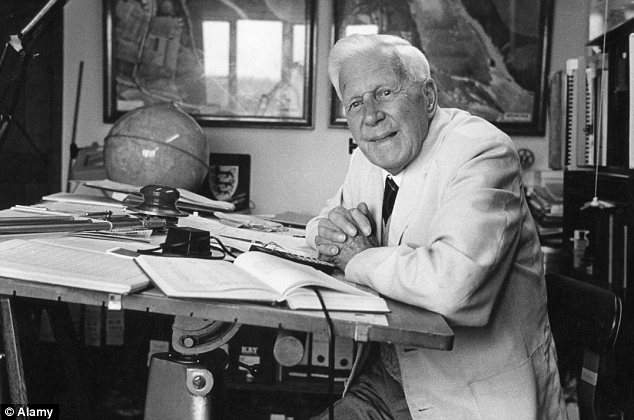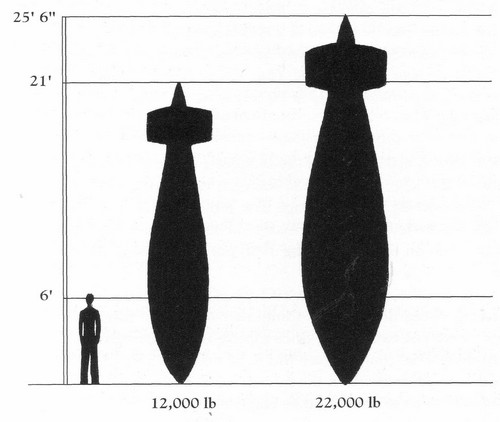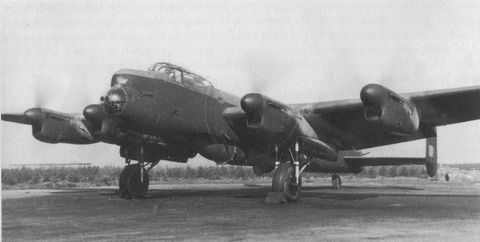The Grand Slam
The 'Grand Slam' was the heaviest bomb developed by any nation in WW2. It was the brainchild of Barnes Wallis (of Dambusters fame) and was designed to be dropped from great altitude. The theory was that instead of relying on a direct hit, a near miss by such a weapon would produce a subterannian pressure wave that would shake a target to pieces.

This weapon which became known as the 'earthquake bomb' has a truly staggering specification. It weighed 22,000lbs or 10000kg and was 26ft (8m) long with a maximum diameter of 5ft (1.53m). Its case was cast from a special chrome molybdenum steel and was filled with 9,975 lbs (4534kg) of Torpex explosive.

The only feasable aircraft to carry such a bomb was the Avro Lancaster. However, in order to carry such a load modified Lancasters named 'B1 Specials' were developed. They had a cutaway bomb bay, strengthened undercarriage, upgraded engines and carried no wireless operator or mid-upper gunner.

The squadron tasked with dropping such a sophisticated weapon was 617Sqn. Following the dam raids in 1943 they had become a 'special operations' squadron. Their special talents would be much needed if this expensive and scarce bomb was to have an impact on the war.

A Grand Slam being lowered into the store.
The ultra heavy bomb store at Woodhall Spa today is much overgrown. However, this is the location where the precious 'Grand Slams' were stored.
617 Squadron historian, Jim Shortlands, stands besides bay number 4 photographed in 1993.
